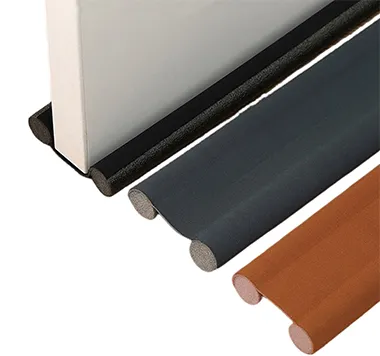garage door bottom
Understanding the Importance of a Properly Sealed Garage Door Bottom
The garage door is an essential component of many homes, not only serving as the entry point for vehicles but also as a barrier against the elements. One often overlooked aspect of garage door maintenance is the bottom seal. The garage door bottom seal is crucial for a variety of reasons, including insulation, pest prevention, and security. In this article, we will explore why the garage door bottom matters and how to ensure it remains in top condition.
Protection from the Elements
One of the primary functions of the garage door bottom seal is to protect the garage and the spaces adjoining it from weather conditions. A well-installed bottom seal minimizes the risk of water, snow, and debris entering the garage. This is particularly important in areas prone to heavy rainfall or snowfall, where an inadequate seal can lead to significant water damage and even mold growth.
Moreover, a good seal also helps regulate temperature. For those who use their garages as workshops or storage spaces, maintaining a stable temperature is essential. A leaky garage door can drastically affect the internal climate, leading to higher heating or cooling bills. By ensuring that the bottom seal is tightly fitted and in good condition, homeowners can create a more energy-efficient space.
Pest Prevention
Another often underestimated benefit of a garage door bottom seal is its role in pest prevention. Small critters, such as rodents and insects, can find their way into the garage through gaps at the bottom of the door. This not only poses a risk to stored items, such as tools and bulk food items but can also lead to hygiene issues. A properly sealed garage door bottom acts as a deterrent, making it much harder for pests to invade.
In addition to keeping pests out, a good seal also prevents odors associated with wildlife or damp conditions from entering the home. Homeowners who are vigilant about maintaining this seal will find that their garages remain more pleasant and usable.
garage door bottom

Security Considerations
From a security standpoint, the bottom seal of a garage door contributes to the overall integrity of the home. A door that doesn’t close flush with the ground not only invites the elements but can also provide an entry point for intruders. A well-fitted bottom seal makes it more challenging for potential burglars to access the garage or, by extension, the home itself.
Regularly inspecting and replacing the bottom seal as needed can significantly enhance the security of your property. Homeowners should be proactive in identifying wear and tear, as a small gap can easily turn into a larger security issue over time.
Maintenance and Replacement
To maintain the effectiveness of the garage door bottom seal, homeowners should conduct routine inspections. Signs of wear include cracks, tears, or gaps between the seal and the ground. Depending on the material, seals can become less effective over time—rubber, for instance, can dry out and harden.
If replacement is necessary, choosing the right material is key. Most garage door bottom seals come in rubber, vinyl, or brush types. Each has its own advantages and drawbacks, but rubber seals are generally favored for their durability and effectiveness against the elements.
Conclusion
The garage door bottom seal is an integral part of any garage system, contributing to insulation, pest control, and security. By prioritizing its maintenance and ensuring it is properly sealed, homeowners can protect their garages from the elements, keep pests at bay, and enhance the overall security of their homes. Regular checks and timely replacements will not only prolong the life of the garage door but also safeguard the valuable space it protects. Investing in a quality garage door bottom seal is a simple step with extensive benefits.
-
Under Door Draught Stopper: Essential ProtectionNewsJul.31,2025
-
Garage Door Seal and Weatherstrips for ProtectionNewsJul.31,2025
-
Edge Banding Tape for Perfect EdgesNewsJul.31,2025
-
Table Corner Guards and Wall Corner ProtectorsNewsJul.31,2025
-
Stair Nose Edging Trim and Tile Stair SolutionsNewsJul.31,2025
-
Truck Bed Rubber Mats for Pickup BedsNewsJul.31,2025
-
Window Weather Stripping for Noise ReductionNewsJul.29,2025